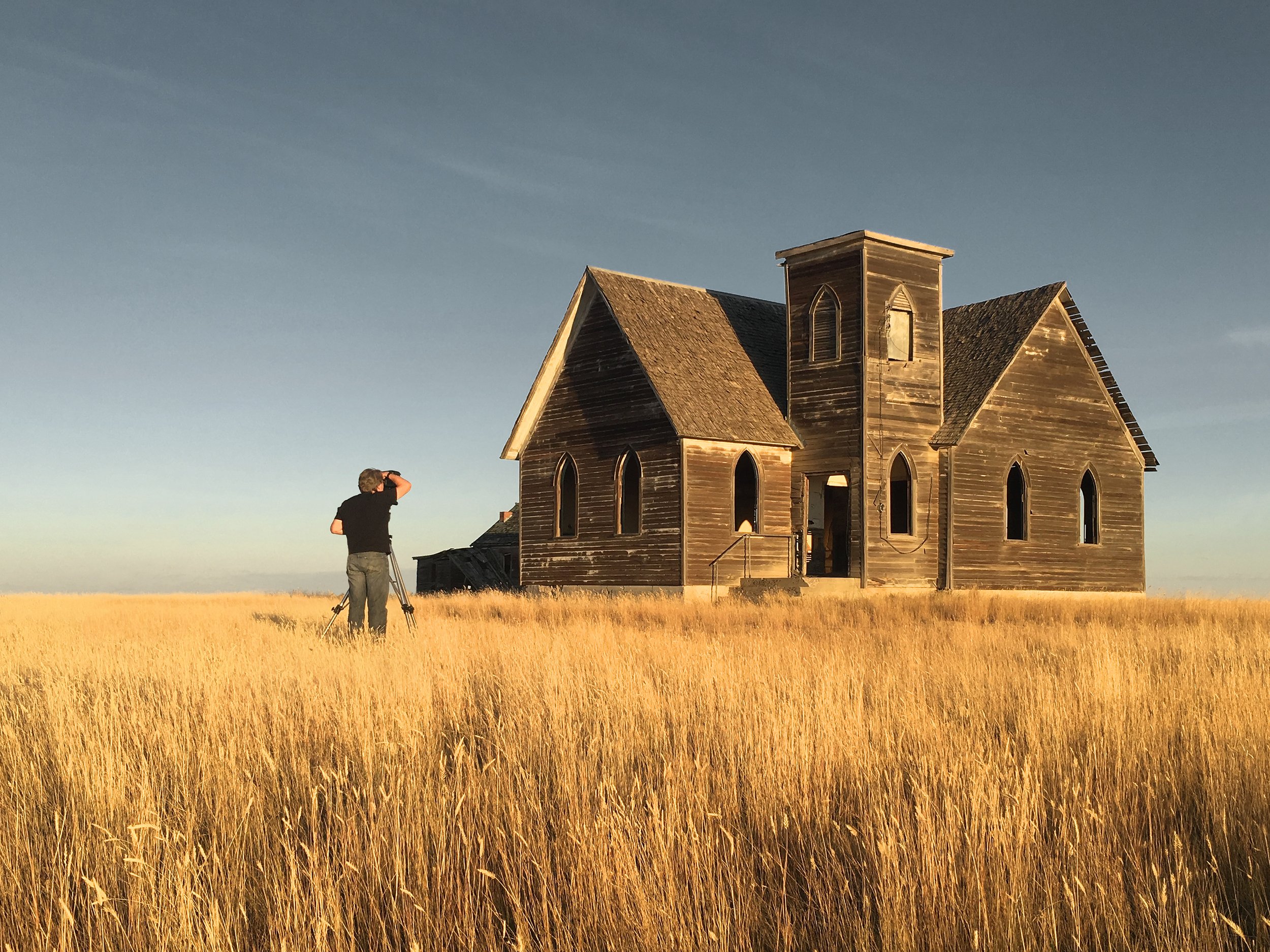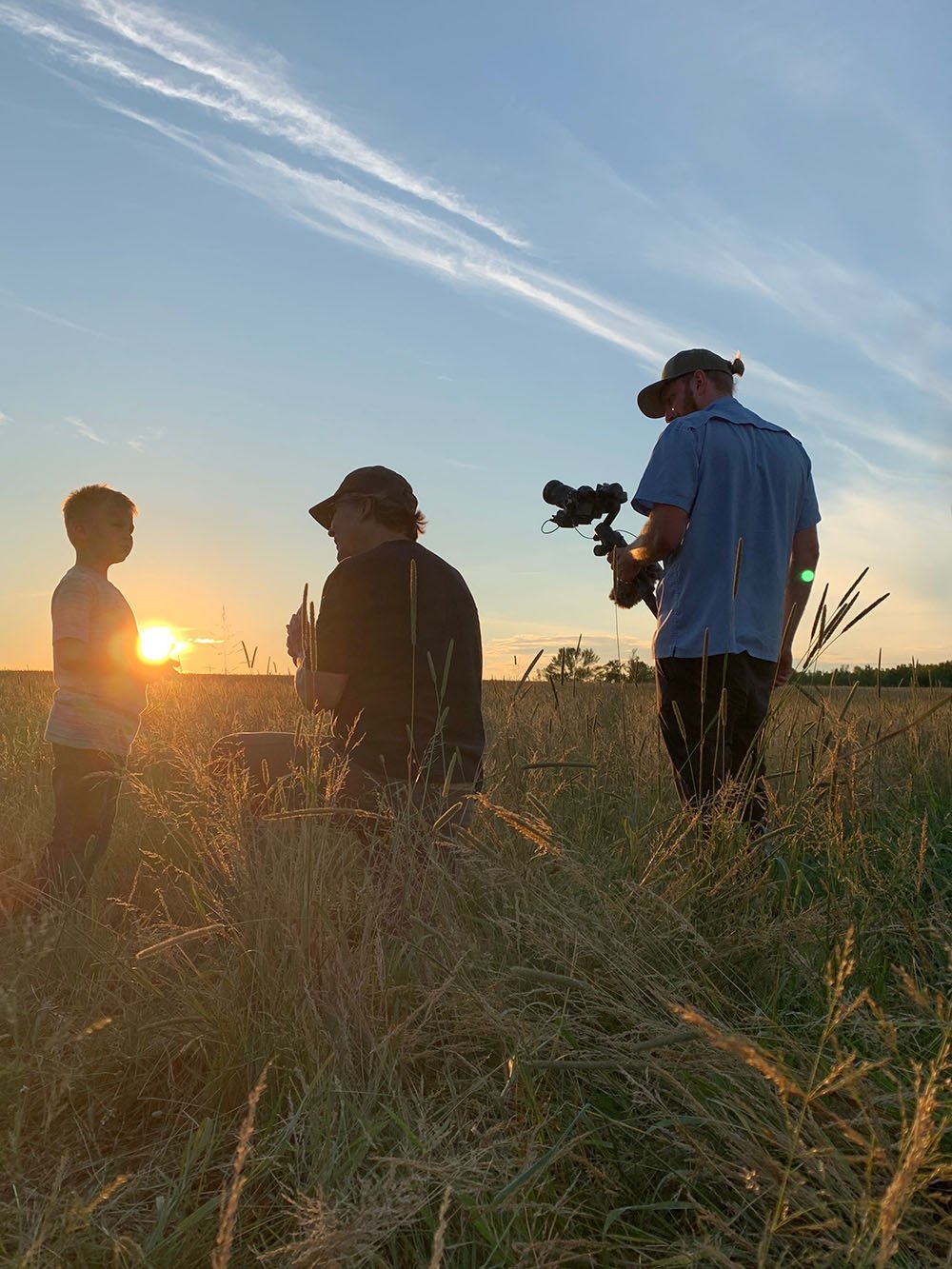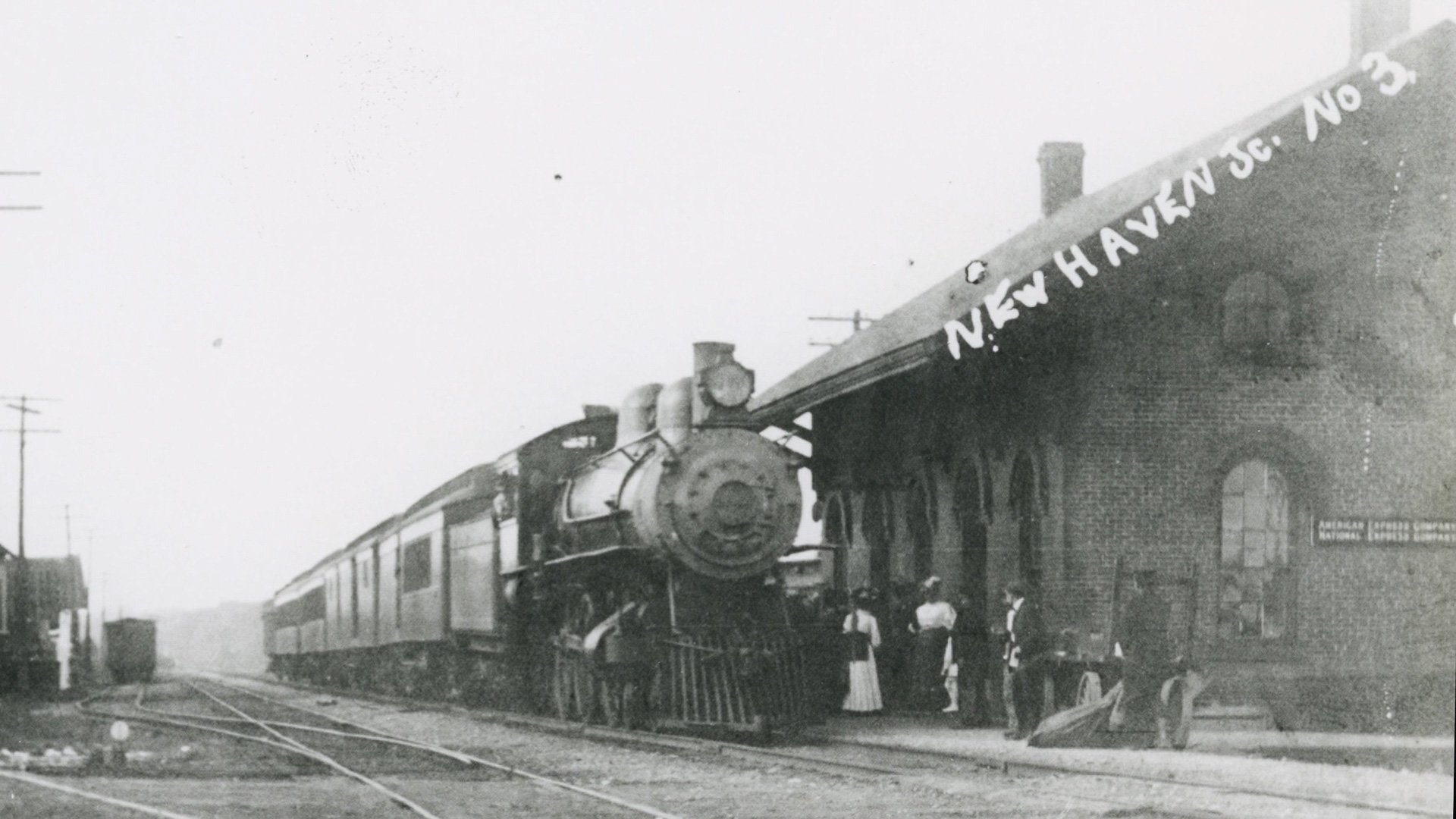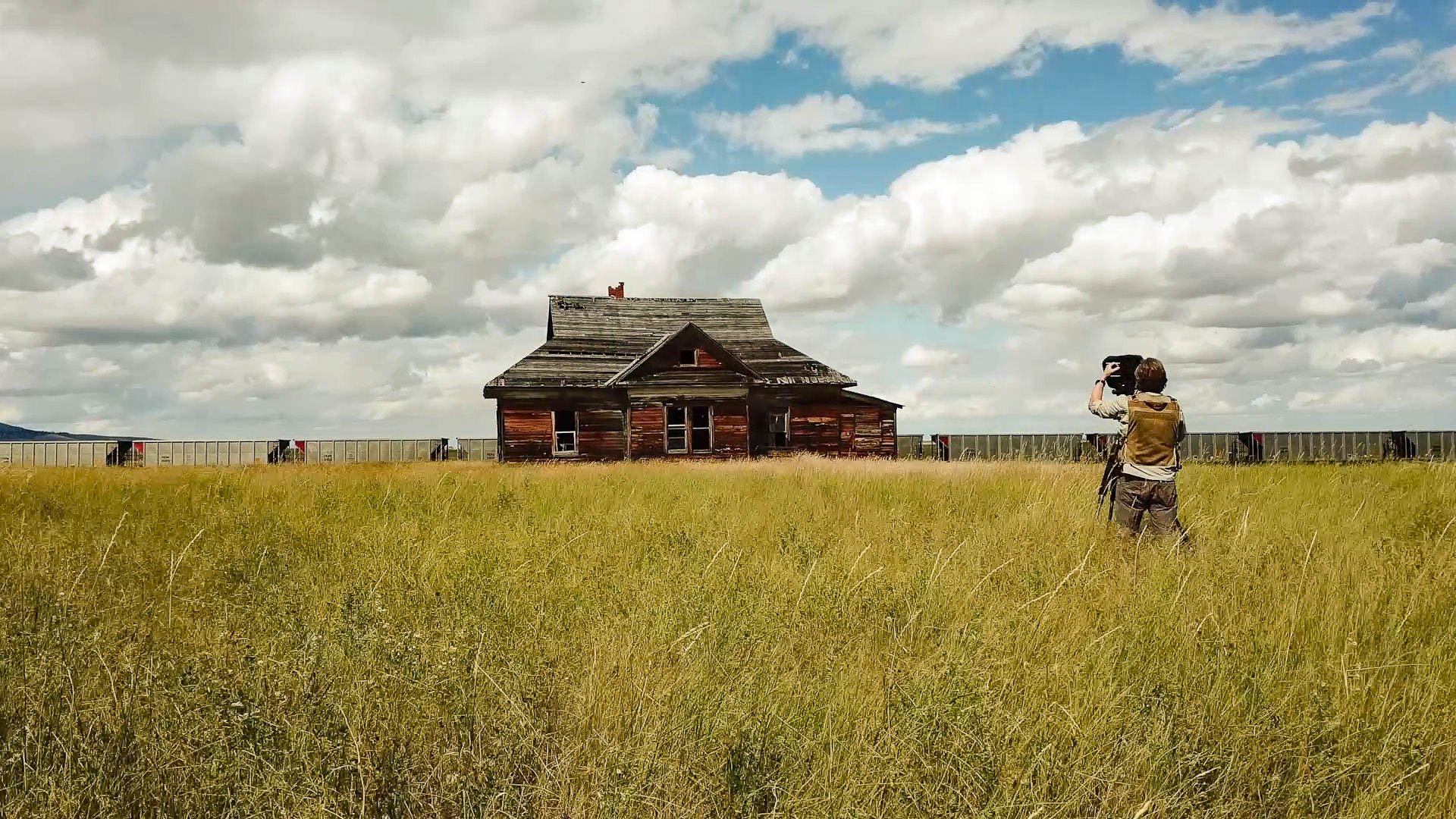
“Jim Westphalen’s visually stunning film, Vanish, is a eulogy for a rural way of life that is disappearing, but it also serves as a clarion call for all of us to preserve what’s left and what matters.”
About the Film
A remarkable story of past and present, Vanish - Disappearing Icons of a Rural America is a feature length documentary film that chronicles the “visual preservation” adventures of fine art photographer, Jim Westphalen, as he travels across the country seeking out and creating stunning imagery of America’s disappearing rural structures. The film also features deep dive interviews with preservation experts as well as the passionate people who strive and struggle to save these fading treasures, sharing their intimate stories of dreams, loss and triumphs.
Beginning with memories from Westphalen’s childhood, the Vanish film is equal parts art, history and storm chasing. Road-trip with Westphalen as he races against time and the unrelenting elements to capture the extraordinary beauty of aging barns, one room schoolhouses, grain elevators, prairie churches and all the classic structures that our country’s rural heritage was built upon.
Written, directed and produced by Jim Westphalen with Academy Award winning story consultant, Doug Blush, Vanish is a call to action; a film designed to make us sit up and notice not only the visual beauty of these structures as they stand today, but, for those who have the passion and resources, a poignant encouragement to at least maintain, if not restore these fading treasures. We are living in a period of profound historical loss all across rural America. For when these structures disappear, along with the generation that knows their stories, another piece of our heritage will be lost forever.
“For more than two decades, Vermont-based photographer Jim Westphalen has documented old farmhouses, barns, churches and homes that have fallen into disrepair — he calls it ‘finding beauty in decay.’ His works are collected in a book and film, both titled ‘Vanish: Disappearing Icons of a Rural America.’ Westphalen shares his Brief But Spectacular take on the vanishing structures of rural America.”
The Interviews
Jack Watts
Glendale Farm
Cornwall, Vermont
As owner and steward of a classic New England farm compound, Jack Watts has gone to great lengths and expense to maintain his 19th century home and four historic farm structures. His English barn dating back to the 18th century.
“It’s hard for me to know what the future of Glendale Farm will be. I have my hopes and dreams, but that’s all I have”.
Phil Stehman
Church of the Brethren
Kremlin, Montana
The Milk River Valley Church of the Brethren is a survivor. Built by German immigrants in 1918, the church has weathered wildfires, lightning strikes, and all the harshest weather that the great plains could throw at it.
” In our faith, the church of the bride of Christ. So, the idea of ever selling it was discounted right away. It’s isn’t a thing for that’s for sale.“
Brian Adams
Mansfield Valley Poultry Farm
Stowe, Vermont
Established in the late 1930s, third generation poultry farmer, Brian Adams struggles to keep the family table egg business viable as he competes with larger local operations. One of his unique three-story chicken coops was deemed a safety hazard and had to be demolished in 2015.
“My dad was approached by a developer to buy the whole place and he said, “I’m not interested in filling a suitcase full of money”.
The Myrick Family
Myrick Farm
Bridport, Vermont
The Myrick family settled this land back in the late 19th century. Bob Myrick and his nine children continued farming the land right up until the early 1990s when the last of his sons left the farm. It was then sold to a Russian entity as they had hopes of learning American methods of farming.
“All my brothers left the farm one at a time, so being the youngest, and the only one remaining, I knew that if I left, the farm was done.”
Marian and Erin Connor
Hathorne Schoolhouse
Bridport, Vermont
Marian Connor had a deep passion for saving the one room 1860s schoolhouse. As farmers, the Connor family had very limited resources but through her passion, resourcefulness, and dedication, today the restored Hathorne schoolhouse stands as a monument to the days when it was the very heart of the community.
“I called the state department and said, “I want to restore this building”. So they came down and looked at it and they looked at me and said “just use it as a shed”. And I said “I love this building, I’m not going to keep it as a shed”.
Laura Trieschman and Steve Dupoise
The New Haven Train Depot
New Haven, Vermont
Listed on the national register of historic places, this 1860s Italianate style railroad depot was an eminent danger of the wrecking ball. Through heroic 11th hour efforts by the town and the state’s preservation organization, funds were raised to rescue and move this historic town treasure.
“That’s our heritage, that’s our history, so if we just watch these buildings go away (and don’t save any of them) and we don’t tell stories about them, we’re not going to have any of it for future generations”.
Tom Visser
Director, Historic Preservation Program University of Vermont
“They have the character, the patina and the integrity, and is just an amazing testament the work that Jack has done to maintain these buildings for more than two decades.”
Tom Denenberg
Director, The Shelburne Museum
“It reminds me of the small town that I grew up in, people always used to say “Oh, you make a right turn where the barn used to be“
About the Director
Jim Westphalen - Director, Writer, Producer
4 Years of filming, 20 years in the making.
I never intentionally set out to become a filmmaker. I began photographing what I call “the beauty in decay” soon after moving to rural Vermont in 1996. At first, it was purely the visual beauty of these withering structures that drove me, but once I began collecting the rich and very personal stories of those who own, know the history or have connections with these buildings, I recognized the critical historical significance of this mission and that these poignant stories needed to be shared with the masses. The logical vehicle in which to do that was a documentary film. The Vanish film became a way in which to celebrate not only the allure of what these structures had now become, but also a way in which to honor their past and pay tribute to the people who built them.
The Making of the Film
Vanish was a self-funded labor of love. I enlisted my long time employees, Bill Killon, Lenny Christopher and Ivar Bastress (all who have some filmmaking background), to help create the documentary. My wife (also a photographer) and sometimes travel partner, Kendra Dew Westphalen contributed the raw and gritty (sometimes literally) en vérité behind the scenes footage. For the storyline, I decided upon a hybrid approach. First, I wanted people to gain a clear understanding of the sometimes immense challenges (e.g. locating structures, extreme weather conditions, gaining location access etc.) I face in creating my imagery. The film shows that this often perceived “glamorous” life-on-the-road, is anything but that. These travel exploits are laced throughout the film with the intimate and touching stories of the people who own or have a close association with the profiled structures and were also willing to share their personal narratives on camera. I also interviewed preservation specialists who speak to the urgency of the historical loss that we are currently experiencing in rural areas across America.



































